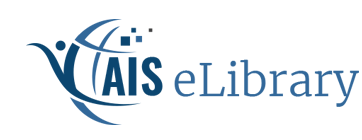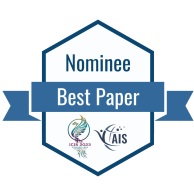Loading...
Paper Number
2073
Paper Type
short
Description
An in-depth understanding of employees’ threat perceptions towards AI or other IT-related transformations could inform and elevate existing innovation processes, leading to higher adoption rates. Existing IS and management research mostly refers to organizational performance measures and customer perceptions, neglecting the critical role of employees. This paper argues that effective transformation and integration of this new actor AI predominantly depends on employees–acting as intermediaries between the technology and customers. Noting the largely neglected flipside of AI transformation from an employee perspective, the current article conducts a qualitative investigation among 103 healthcare professionals to derive important AI-adoption barriers. Drawing on self-determination and social impact theory, data among five AI-application categories were analyzed, leading to three important job-related threat dimensions: Professional Development & Leadership, Workforce Empowerment & Collaboration, Workforce Resilience & Risk Management. The resulting conceptual framework offers valuable cross-industrial insights, contributing to the broader understanding of adoption resistance.
Recommended Citation
Stead, Susan, "The Inscrutable New Actor: An Employee Perspective on the Flipside of AI" (2023). ICIS 2023 Proceedings. 13.
https://aisel.aisnet.org/icis2023/itadopt/itadopt/13
The Inscrutable New Actor: An Employee Perspective on the Flipside of AI
An in-depth understanding of employees’ threat perceptions towards AI or other IT-related transformations could inform and elevate existing innovation processes, leading to higher adoption rates. Existing IS and management research mostly refers to organizational performance measures and customer perceptions, neglecting the critical role of employees. This paper argues that effective transformation and integration of this new actor AI predominantly depends on employees–acting as intermediaries between the technology and customers. Noting the largely neglected flipside of AI transformation from an employee perspective, the current article conducts a qualitative investigation among 103 healthcare professionals to derive important AI-adoption barriers. Drawing on self-determination and social impact theory, data among five AI-application categories were analyzed, leading to three important job-related threat dimensions: Professional Development & Leadership, Workforce Empowerment & Collaboration, Workforce Resilience & Risk Management. The resulting conceptual framework offers valuable cross-industrial insights, contributing to the broader understanding of adoption resistance.
When commenting on articles, please be friendly, welcoming, respectful and abide by the AIS eLibrary Discussion Thread Code of Conduct posted here.




Comments
12-ImplAndAdopt